Table of Contents Show
If you like RVing, an RV trip to Yellowstone is one of the best ways to experience the incredible national treasure. As one of the most iconic national parks in the United States, Yellowstone is a must-see.
Since it’s one of the nation’s most visited sites, it’s naturally busy, and planning a trip here requires time. But we’ve got you covered with the important details. Read on for our recommendations.
How to Plan an RV Trip to Yellowstone
The first step to planning an RV trip to Yellowstone is the planning itself. While you can always head into the park and drive around without advance planning, if you want to stay within or near the park, getting advance reservations is a very good idea. Sometimes, you must book months in advance.
Additionally, there’s a lot to see in the park, and if you want to get the most of your trip, you’ll want to plan out your daily itinerary.
Throughout this article, we’ll talk about what you need to consider when planning an RV trip to Yellowstone.
Booking Campsites for Your RV Trip
Yellowstone National Park typically sees over 4 million visitors in a year, which is a lot considering the entire park is only open in the summer! Because this park sees so many visitors in such a short period, it’s not easy to get a campground reservation in the park.
There are only five campgrounds in the park that allow reservations. They start booking several months in advance and sell out fast.
Sometimes, you’ll need to call a full year in advance. So, if you plan on reserving an RV campground within the park boundaries, start planning now.
The only other way to get a campsite in Yellowstone is first-come, first-serve. There are four of these, and during peak season, you’ll have to get there early to snag a campsite for the night.
Most campgrounds check out their guests at 10 am, but they might allow you to claim a site as early as 7:30 or 8:00 am when the host arrives.
There are also over 300 backcountry campgrounds in and around Yellowstone that are first-come, first-serve.
So if you don’t mind driving around looking for a place to camp, you might find something the day of your arrival. But you’ll more than likely be boondocking.
About Yellowstone National Park Campgrounds
Eight campgrounds in Yellowstone take reservations, and the rest are first-come, first-served. Yellowstone National Park Lodges is a concessionaire that manages five of the reservable campgrounds. You can book the other three can be booked through Reservation.gov.
Here are the pertinent details about the eight reservable campgrounds you’ll need for your RV trip to Yellowstone.
Bridge Bay
Bridge Bay Campground is close to Bridge Bay Marina on Yellowstone Lake. It has both RV and tent sites, and you can reserve it through Yellowstone National Park Lodges.
This seasonally open campground has 432 dry camping sites and 16 public restrooms with flush toilets and running water.
Madison
Madison Campground is near Madison river, making it a popular choice for anglers and fishing enthusiasts.
It’s a dry camping area with 278 tent and RV campsites plus 14 public restrooms with flush toilets and running water. YNP Lodges runs this seasonal campground.
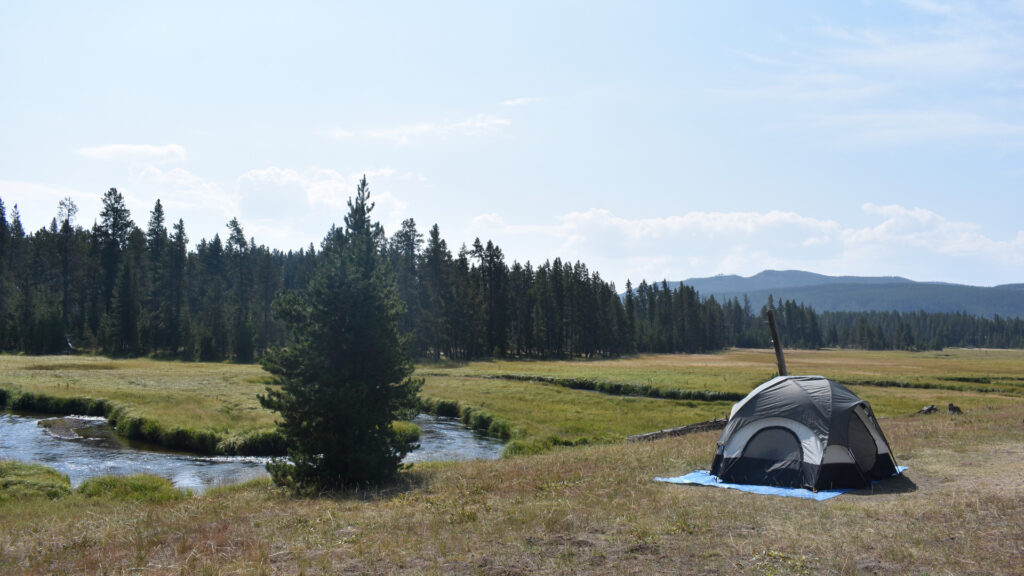
Canyon
Yellowstone National Park Lodges runs Canyon Campground, a seasonal retreat popular due to its central location in the park. This campground is within a mile of Yellowstone’s Grand Canyon.
Canyon campground has 270 dry camping sites for tents and RVs with 15 public restrooms that have flush toilets and running water–perfect for an RV trip to Yellowstone.
Grant Village
Grant Village Campground has over 400 tent, RV, and combination tent/RV camping sites. This campground is dry camping only and has 17 public restrooms with flush toilets and running water.
Grant Village Campground is on the southwest shore of Yellowstone Lake, and you can reserve it through Yellowstone National Park Lodges; it’s open seasonally.
Fishing Bridge
YNP Lodges also runs Fishing Bridge Campground and is under renovation as of 2021. This RV park is in a bear habitat, so only hard-sided vehicles can camp here.
Fishing Bridge Campground will have over 310 RV campsites with full hook-ups with coin laundry and showers on-site. You can make reservations through Yellowstone National Park Lodges.
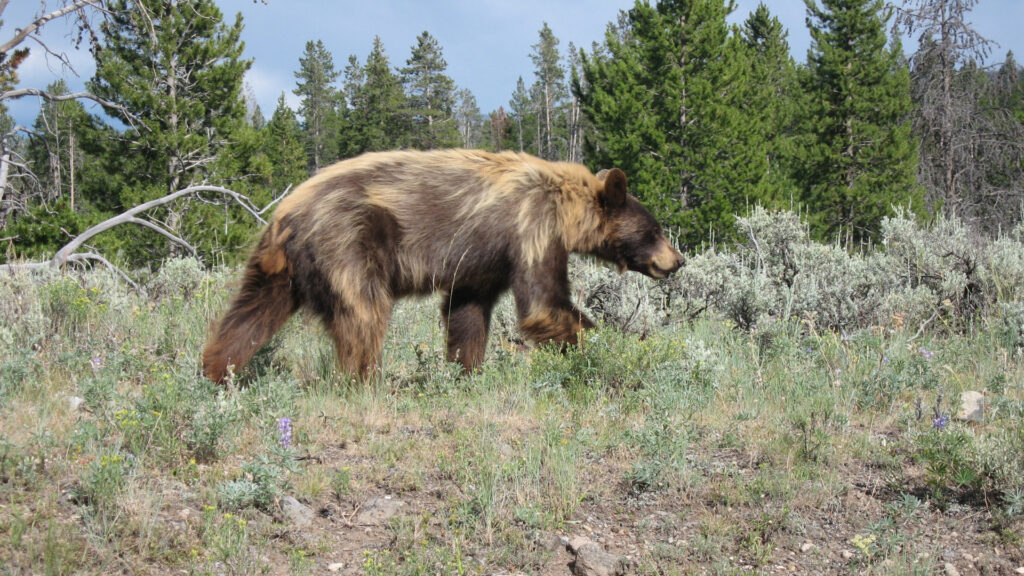
Mammoth
Mammoth Campground is the only campground in Yellowstone that’s open year-round, and you can reserve it through Recreation.gov.
This campground is five miles south of the park’s north entrance and has 85 dry camping sites with public flush toilets and running water.
Mammoth can accommodate many sizes of RVs but has a winter length restriction of 30ft. Keep that in mind when planning your Yellowstone RV trip.
Slough Creek
Slough Creek Campground can accommodate tents and RVs up to 30ft in length, but experts recommend that you walk through it first to assess your route. Make reservations through Recreation.gov.
This campground features potable water and vault toilets and is home to some of the best wildlife viewing in Yellowstone.
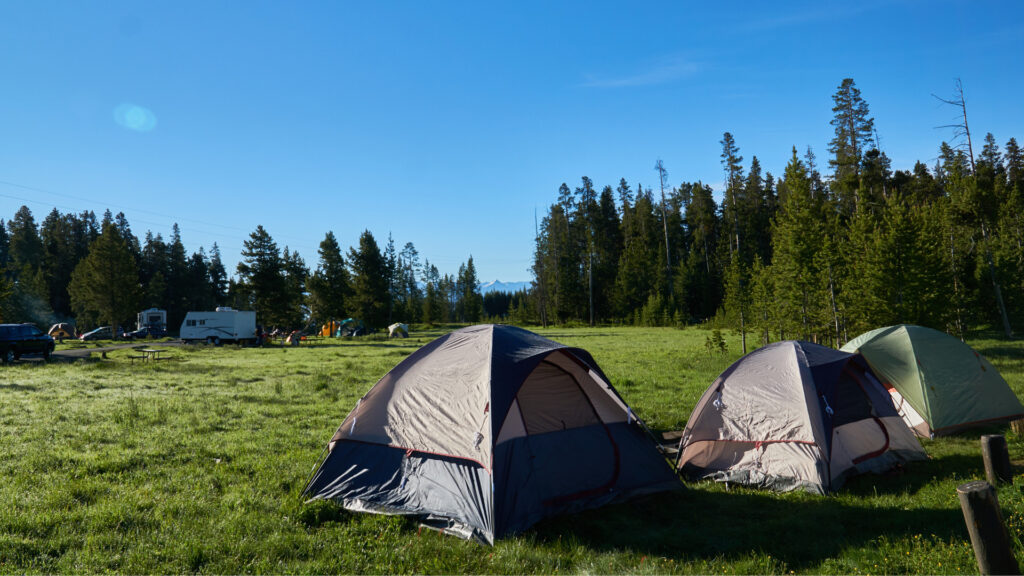
Pebble Creek
Pebble Creek Campground has 16 reservable campsites and can accommodate many RV sizes with some long pull-through campsites.
It’s a more isolated camping experience near the park’s northeast entrance with potable water and vault toilets.
You can reserve this campground through Recreation.gov.
Alternatively, Choose Campgrounds or RV Parks Outside the National Park
If getting a campground within Yellowstone seems too daunting or risky, you can always look for RV camping at campgrounds and RV parks outside the national park boundaries.
Towns near Yellowstone include West Yellowstone, MT, Island Park, ID, and Gardiner, MT.
Planning Your RV Route to Yellowstone
After you’ve taken care of your campground reservations, planning your RV route is the next step.
Google and Apple Maps are great for getting around, but they don’t always lead you down the best route for your RV! To give you the fastest route possible, these popular navigation systems might lead you down some difficult or even unsafe roads for RVs.
You can avoid this by using an RV-specific GPS device or planning your route and gas stops ahead of time.
Pro Tip: Use an RV travel planning app like RV Life Trip Wizard that will plan an RV safe driving route and help estimate fuel costs.
Planning Your Daily RV Trip to Yellowstone Itinerary
There’s a lot to see and do in Yellowstone National Park. And you can’t possibly do it all in one day!
It’s challenging to make rigid plans when visiting Yellowstone because things could change at a moment’s notice. It’s not uncommon to experience an hours-long traffic jam due to wildlife on the roads, so be aware of that, too!
Look at the park’s attractions and excursions before you go. Make a list of non-negotiables or the sights you want to see most.
Then, make a list of other things you’d love to see and finish your list with things that would be nice to see, but you can pass by if necessary.
Try to plan out your activities by day. Since the park is so big, plan each day’s activities around a central location in the park so you’re not losing time by driving all over the place.
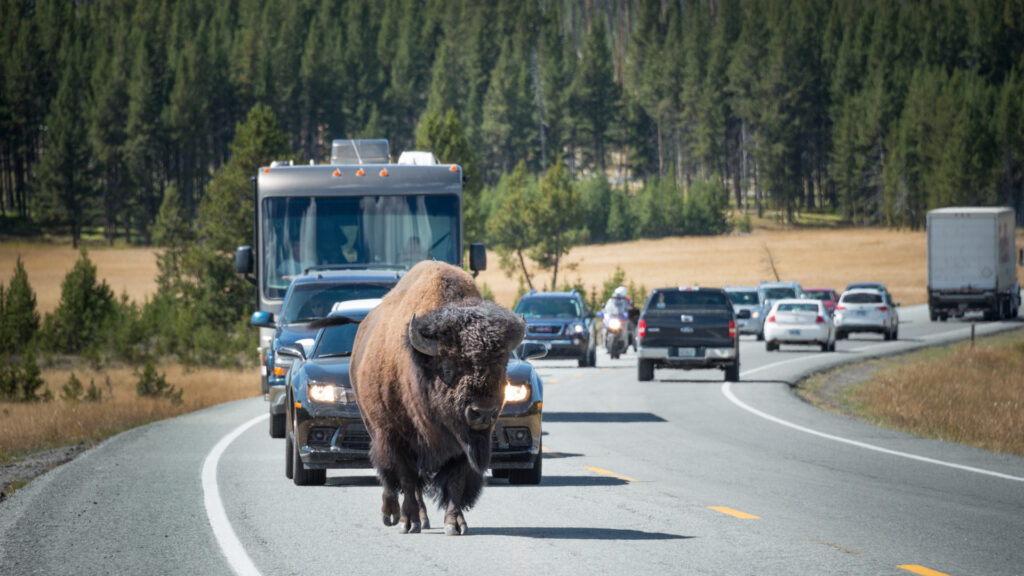
Using a Tow Car or Rental Vehicle in Yellowstone
Most roads in Yellowstone are safe for RVs, and there are many turn-out and turnarounds on these roads. However, having a smaller vehicle to tour the park in would be much simpler.
Yellowstone has no public transportation, but many companies offer shuttle bus tours of the park. If you want to be the master of your own tour, a tow vehicle or rental car would be ideal.
Can You Rent an RV for a Yellowstone Road Trip?
Yes, you can rent an RV for a Yellowstone trip if you don’t have your own. Like any reservations you’ll make there, you probably need to book your RV rental many months in advance if you’re renting near the park.
Renting an RV will be more expensive than traveling on your own. In addition to considering your daily rental cost, think of your gas budget, insurance, and campgrounds along the way.
An RV Trip to Yellowstone Should Be on Everyone’s Bucket List
Yellowstone National Park should be on everyone’s travel bucket list. It has so much wildlife, history, and incredible varying geography–you won’t find a similar place on earth!
RVing is a great way to experience this national park. You can explore the park during the day and return to your home on wheels at night. And with the proper planning and preparation, your RV trip to Yellowstone will run as smoothly as Old Faithful.


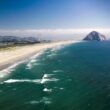

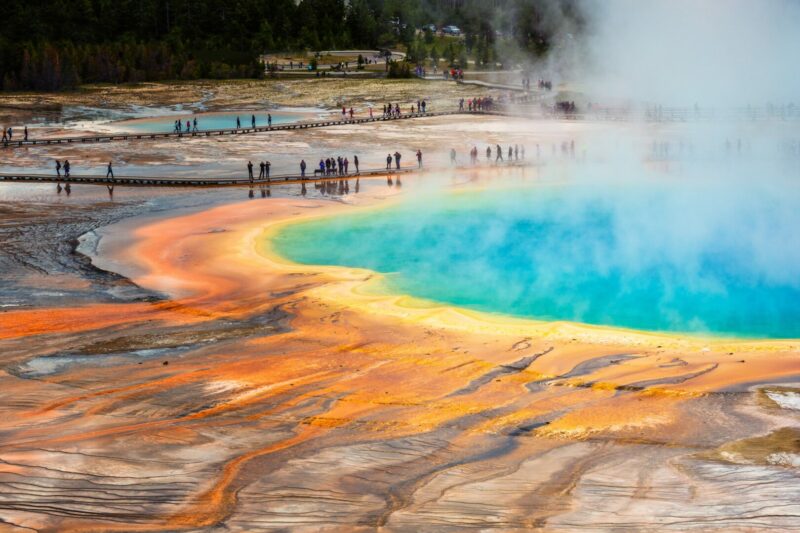
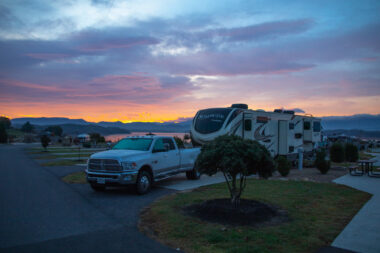
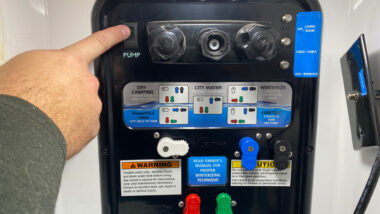
An excellent, well done article. I’ve been to Yellowstone a couple of times and I can say that this article is very concise and gives the
necessary information to make a decision on visiting the park. If this article doesn’t spark your interest, I would recommend you
just go ahead and mark Yellowstone off your bucket list. Leave the space for those of us that can’t get enough of it. If you go, and
tend to be a hiker, I would recommend taking bear spray and learning how to use it properly first. Firearms can be useful in the
right hands, but can be more of a problem than they are worth, due to security and changing regulations. Even in trained hands,
stopping a charging grizzly bear before it reaches you is extremely unlikely. When your hands are shaking like a leaf and you are
wetting your pants, it is not easy to place a kill shot. Whatever the outcome, the resulting investigation, accusations and possible
criminal or civil charges will definitely put a damper on your desires to ever return. That is “if” the bear did not reach you before
you fired or if you missed your shot.